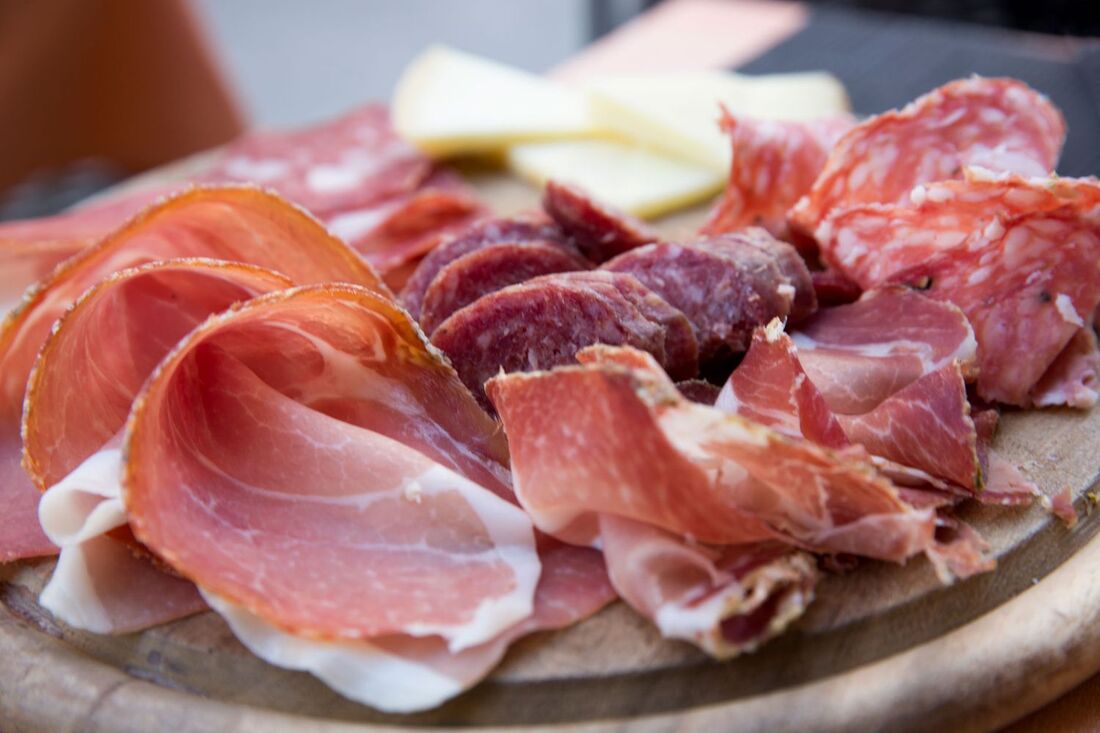HISTORY
Cured meats were most likely produced in Calabria during the Greek colonization of the Ionian coasts.
The most ancient written evidence of the diet of southern people is provided by Marco Terenzio Varrone, a Roman scholar of the 1st century BC. He wrote about “minced meat stuffed into the gut,” which the Roman soldiers learnt to produce from the southern populations.
Another Roman, Marco Gavio Apicio, in his famous De re coquinaria, confirms that the preparation of cured meats required salt and pepper. The first reliable documents concern the pork meat processing tradition that dates back to 1600, when Della Calabria Illustrata was published. Instead, Statistica Murattiana dates back to the French decade, 1806-1815.
Famous figures who praised the flavour of Calabrian salami include Giacomo Casanova who said that he had lunch at the table of the Bishop Francescantonio Cavalcanti in Calabria, where he particularly appreciated the cured meats of Calabria, which he deemed the best he had ever eaten.
PRODUCT DESCRIPTION
Salsiccia di Calabria PDO
It is plaited into the typical chain with length that can vary from 40 to 80 cm, or is tied in the characteristic U shape. When cut it has a medium grain with a natural red or bright red colour, depending on the variety of natural aromatic ingredients used. Its fragrance and savoury flavour are intense.
Soppressata di Calabria DOP
It has the typical slightly pressed shape, with approx. length 18 cm and approx. diameter 6 cm. When cut it is firm and inclined to be soft, with a natural red or uniform bright red colour, depending on the natural ingredients used.
Capocollo di Calabria DOP
It has a cylindrical shape that is wrapped in a natural film and tied with an all embracing twine. It is more or less intensely pink or red, with a delicate flavour that becomes more refined with maturation.
Pancetta di Calabria DOP
It has a rectangular shape with thickness in the range of 3-5 cm, and an external red colour marked by the presence of Calabrian chilli powder. The slice is pink with fine alternating streaks of lean meat and fat. The fragrance is intense with a good savoury flavour.
PRODUCTION TECNIQUE
The cured meats of Calabria PDO offer good protein contents, a right lipid content and are the source of precious minerals. They also feature a hot spicy flavour, and intense natural fragrance.
Salsiccia di Calabria PDO
It is produced with a mixture of meat from the pork shoulder and from under the ribs. Flavoured with natural ingredients, such as black and red pepper, not hot or very hot, fennel seeds and other spices. It is stuffed into the pork gut and plaited into the characteristic shape. Seasoning has a duration of not less than thirty days.
Soppressata di Calabria PDO
It is the most precious Calabrian sausage that is produced from meats that are intended for ham and fillet with the addition of fat that is carefully chosen from the lard taken from the anterior part of the loin. The meats and the lard, flavoured with black pepper grains or red pepper grains that can be hot or not, and with other natural spices, are stuffed into the pork gut. Tied by hand with natural twine and with the typical slightly pressed shape, they are seasoned for a minimum period of forty-five days.
Capocollo di Calabria PDO
It is prepared using the meats of the top part of the deboned pork loin and, then, either dry-salted or pickled. Salting, which has a duration of four to ten days, is followed by washing with water and wine vinegar, pressing and the addition of black pepper grains. Tied by wrapping it with natural twine, it is seasoned for not less than one hundred days, during which period the flavour becomes refined.
Pancetta di Calabria PDO
It is obtained from the pork belly. Following a salting period of four to fourteen days, it is then washed and bathed with wine vinegar. Seasoning has a duration of not less than thirty days.

